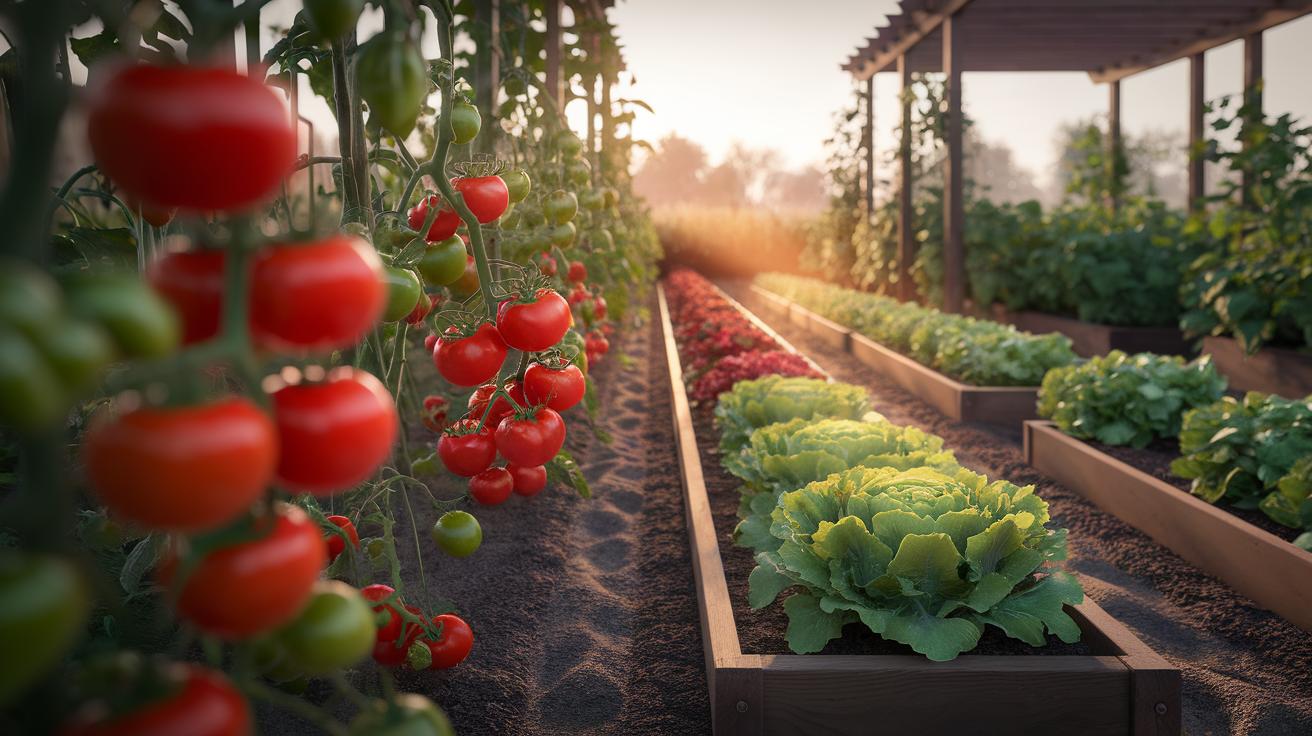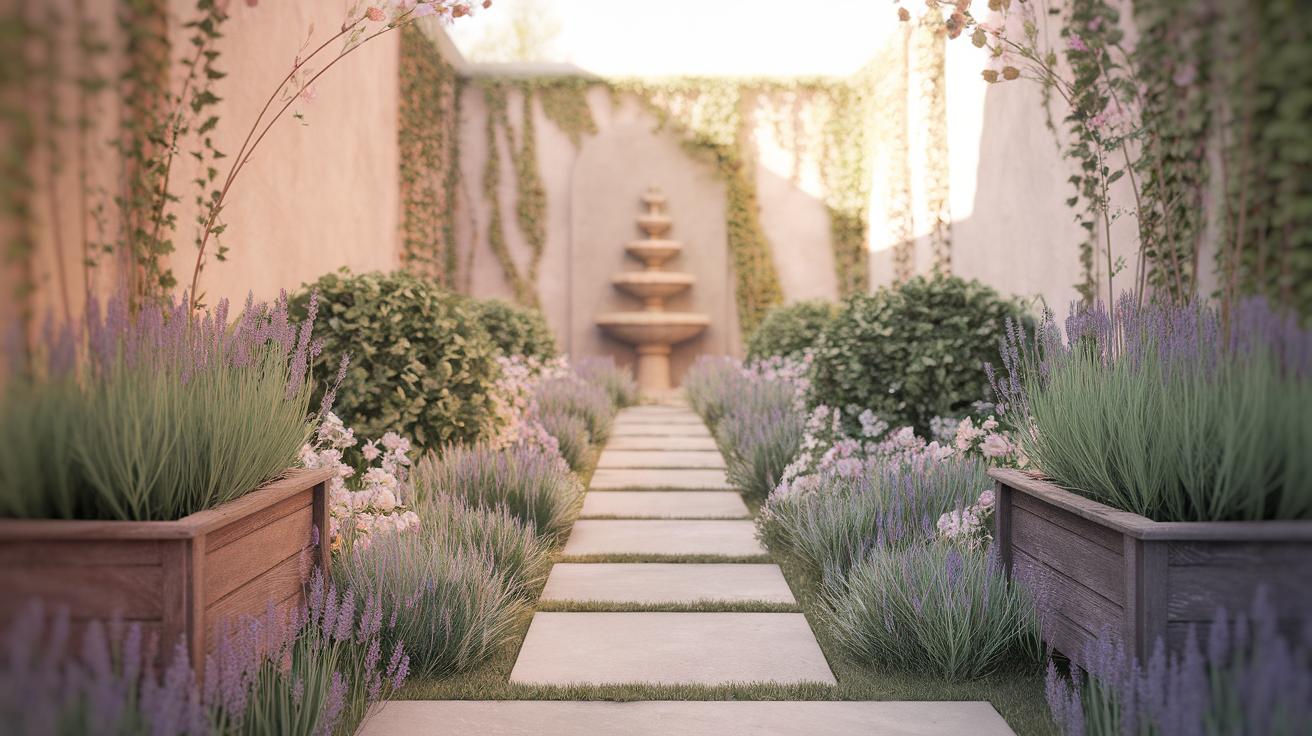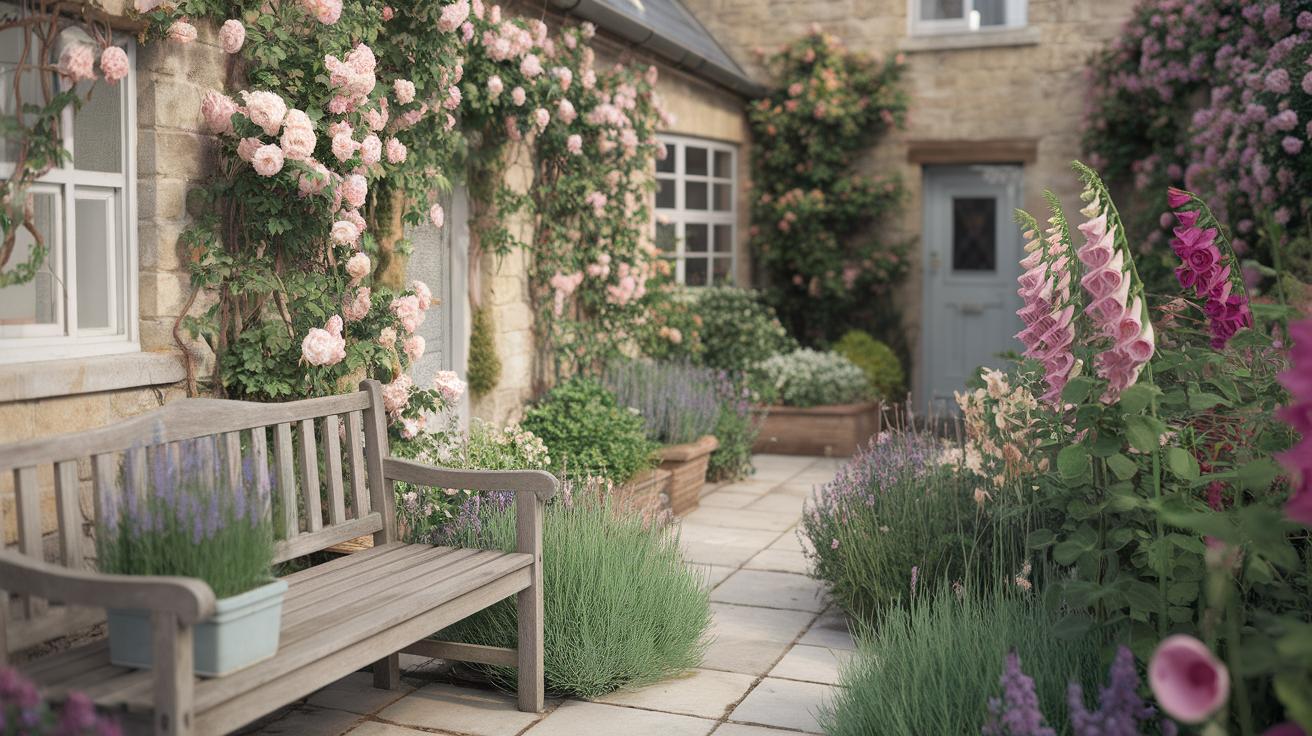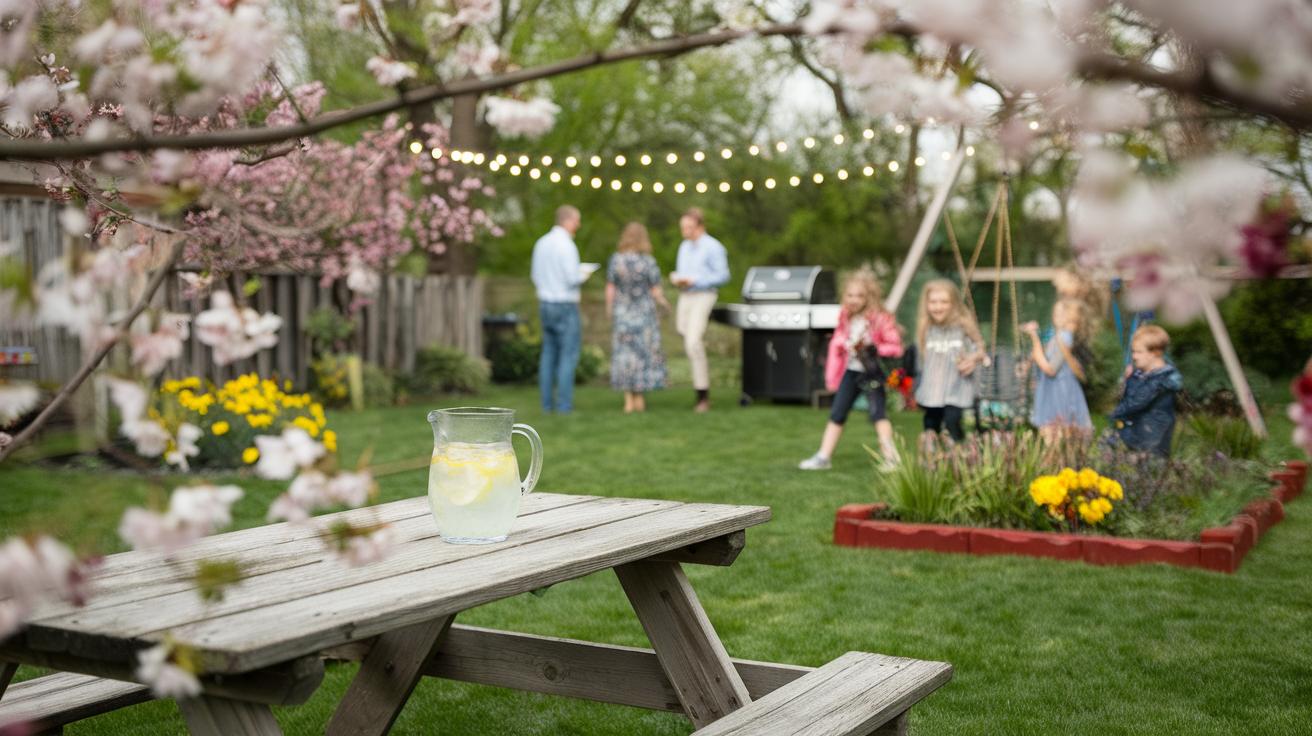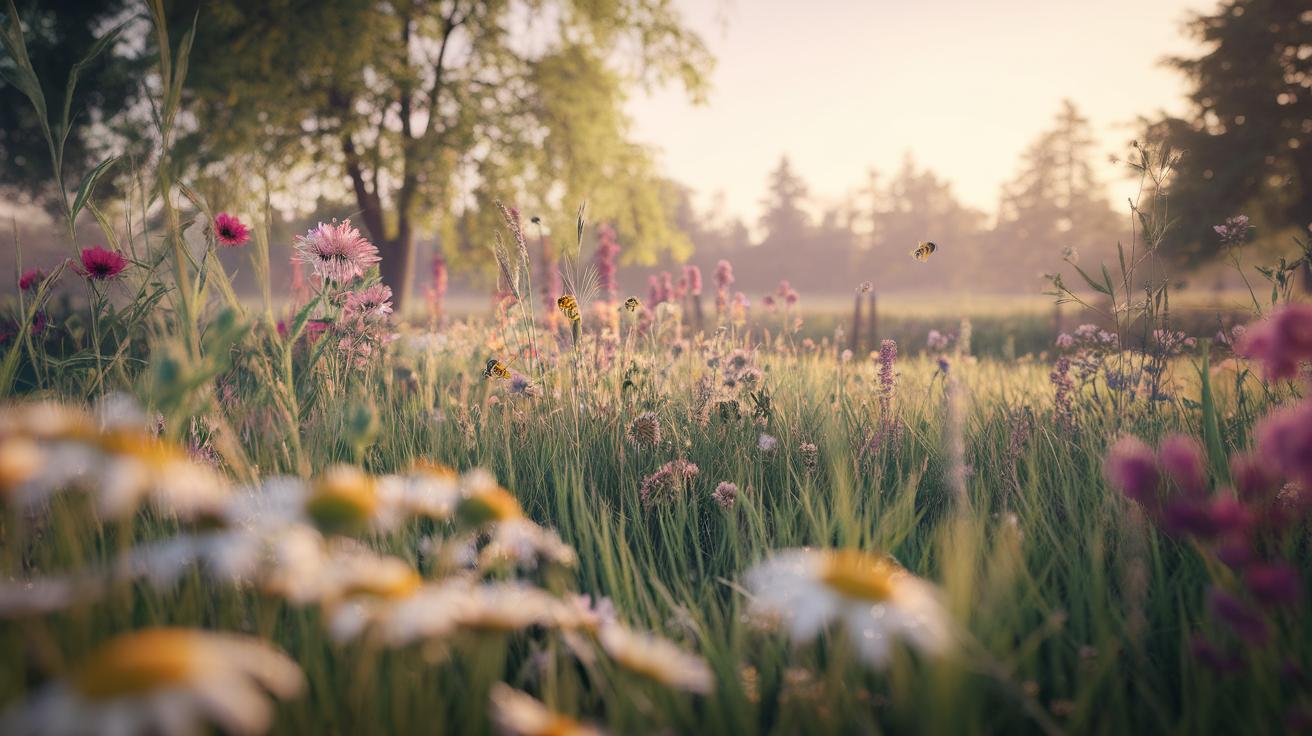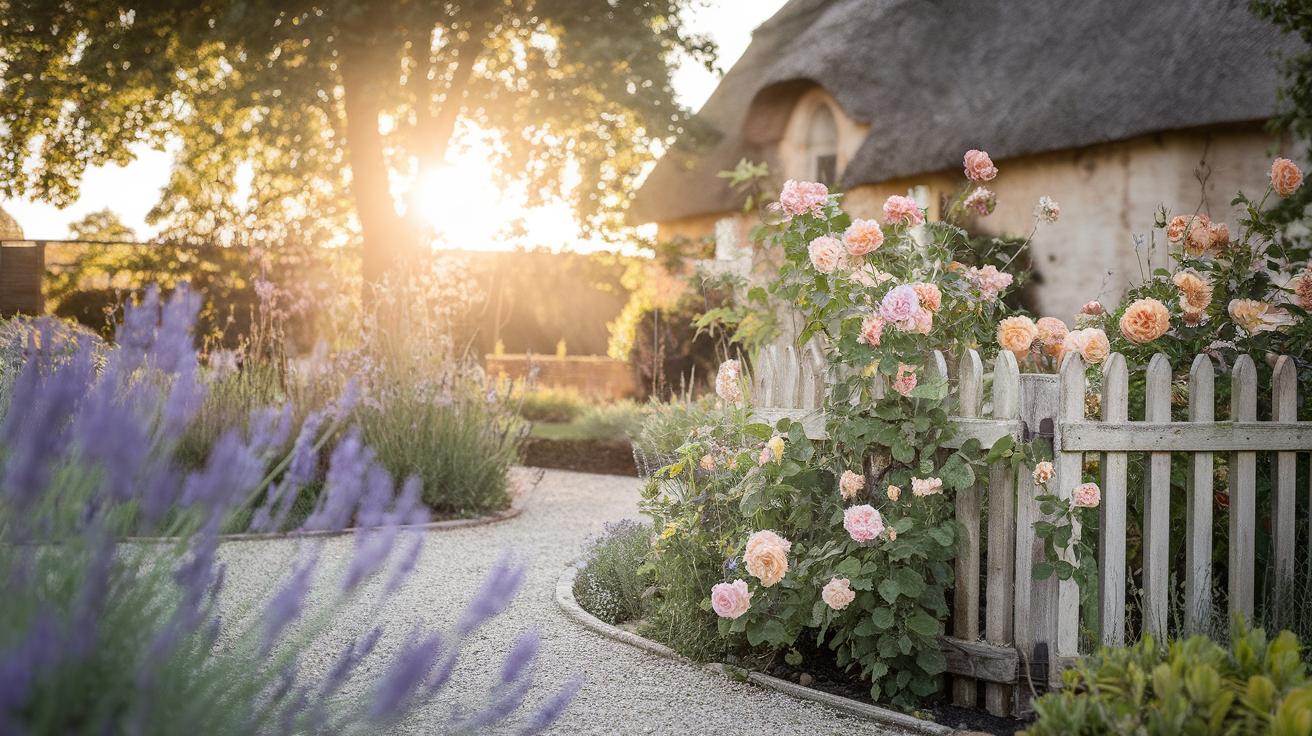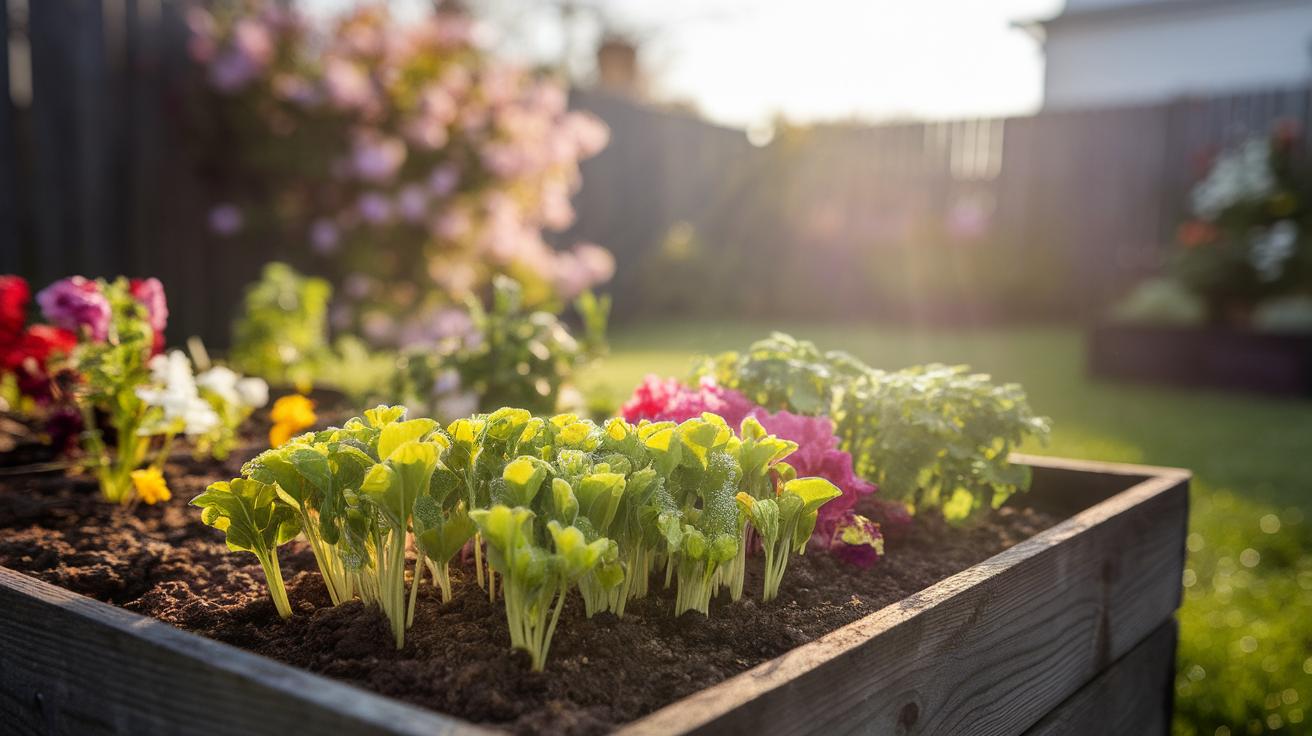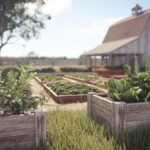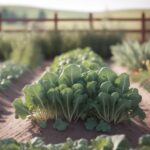Introduction
Growing your own vegetables in a small garden can be very satisfying. Whether you live in a city or have limited outdoor space, a small vegetable garden allows you to grow fresh produce close to home. This kind of garden is normally a dedicated space near your home where you plant vegetables and some herbs for your daily use. Small vegetable gardens have a long history and are a common way to ensure access to fresh food. They make it easy for you to harvest fresh ingredients quickly, which can improve your cooking experience and encourage healthier eating habits.
If you want to get the most out of your small garden, focus on maximizing yield. Maximizing yield means growing as many vegetables as possible in the space you have without reducing the quality of the crops. Achieving this requires planning, choosing the right plants, using effective growing methods, and caring for your garden regularly. This article will guide you through key steps and ideas that will help you increase your vegetable production in a small garden area.
Understanding Small Vegetable Gardens and Maximizing Yield in Small Vegetable Gardens
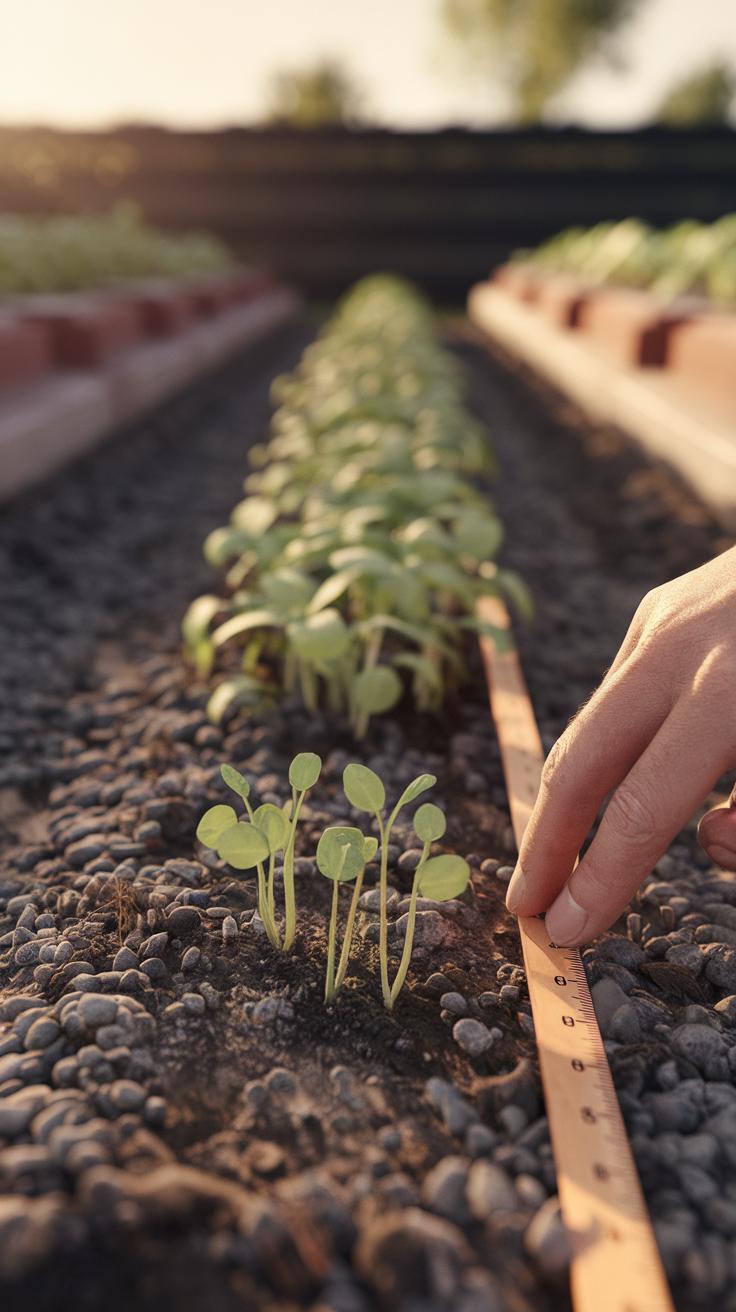
What Defines a Small Vegetable Garden
Small vegetable gardens typically occupy a compact space close to your home. These gardens usually range from a few square feet to a few hundred square feet. Their size allows easy access, making daily care and harvest simple.
You will often find common vegetables such as tomatoes, peppers, lettuce, carrots, and herbs like basil or parsley in these gardens. The focus lies on plants that fit well together in limited space and mature quickly.
Small vegetable gardens differ from larger farms or public allotments because they serve individual or family needs rather than commercial production. Unlike big farms that rely on machinery, these gardens require hands-on tending. Their location near the home not only saves time but encourages frequent use.
How can you make the most of such a small area? Choosing plants wisely and arranging them thoughtfully helps maximize yield, even within tight spaces.
Historical Significance of Kitchen Gardens
Kitchen gardens have a long history. For centuries, many households maintained small, enclosed garden spaces dedicated to growing fruits, vegetables, and herbs for daily meals. Their layout often included protective walls and sometimes greenhouses to extend the growing season.
These gardens played a key role in self-sufficiency before modern supermarkets. Families relied on them for fresh produce, herbs, and medicines. Walls helped keep out pests while greenhouses allowed sensitive plants to thrive year-round.
In historic households, managing a kitchen garden was a daily routine connected closely to cooking and nutrition. This close link made fresh ingredients readily available, improving diet quality and health.
How might this traditional approach inspire your small garden today? Consider the way these kitchen gardens blended form and function near living areas for efficient food production on a modest scale.
Planning Your Small Vegetable Garden Space
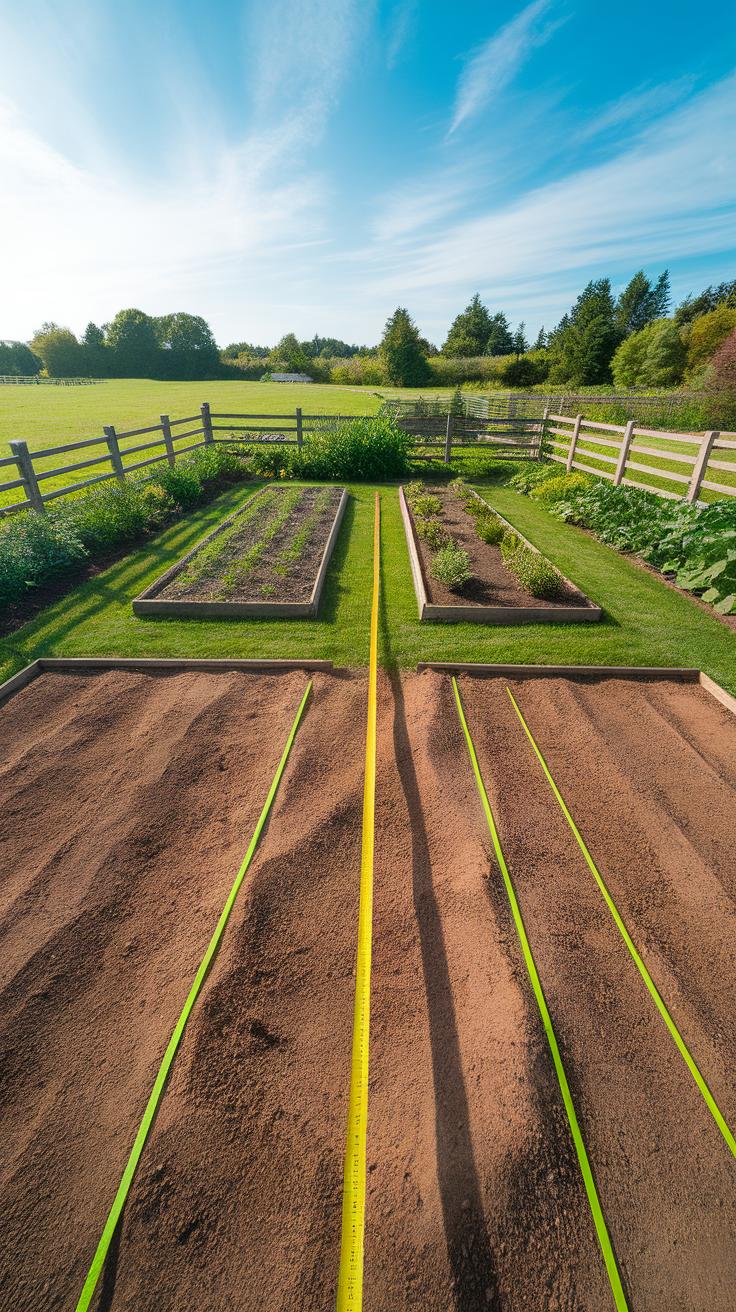
You start by measuring the space you have available for your garden. Use a tape measure or mark boundaries with sticks to get clear dimensions. Identify sunny spots where plants will get at least six hours of direct sunlight daily—this matters greatly for growth.
Sketch a layout considering bed or container sizes. Raised beds about 3 to 4 feet wide let you reach plants without stepping inside. Paths should be wide enough, around 18 inches, for easy access and maintenance. Plan these so you don’t waste space but still can move comfortably.
Soil quality defines your garden’s health. Test the soil for texture, drainage, and nutrients. Mix in compost or organic matter to improve fertility and structure. Well-prepared soil supports strong root systems and better yields.
When choosing crops, think about the space each plant needs and your local climate. Compact, fast-growing plants often suit small gardens better. Can you group tall plants to shadow smaller ones or stagger planting times to extend your harvest?
Assessing Space and Soil for Planting
Start by measuring length and width of your garden area. Multiply these to find total square footage. This helps decide how many plants you can fit without crowding.
Test soil by digging a small hole and feeling its texture. Is it loose and crumbly or hard and compacted? Observe drainage by watering and seeing how fast water soaks in. Good soil drains well but retains moisture.
Add compost to improve nutrients and soil structure. For clay soils, mix sand or leaf mold to increase drainage. Sandy soils benefit from added compost to hold moisture. Over time, this boosts vegetable growth.
Check soil pH if possible. Most vegetables prefer a pH between 6 and 7. Adjust with lime or sulfur based on test results. Healthy soil builds the foundation for strong plants and good yields.
Choosing Your Crops Wisely
Pick vegetables suited for your climate’s growing season. Use local planting guides to find crops that fit your frost dates and temperature ranges.
Consider plant size and growth habit. Choose compact varieties or those that grow vertically if space is tight. For example, bush beans take less room than pole beans but produce less over time. Tall plants like tomatoes need staking and sunlight management.
Select fast-growing crops to maximize harvests in limited time. Radishes and leafy greens mature quickly and allow for multiple plantings in one season. Think about staggering crops to keep production steady.
Ask yourself which vegetables your family enjoys and eats regularly. Growing your favorites boosts your motivation to care for the garden and reduces food waste. Matching plant choice to your space and climate creates a productive small garden you’ll value.
Choosing HighYield Vegetable Varieties
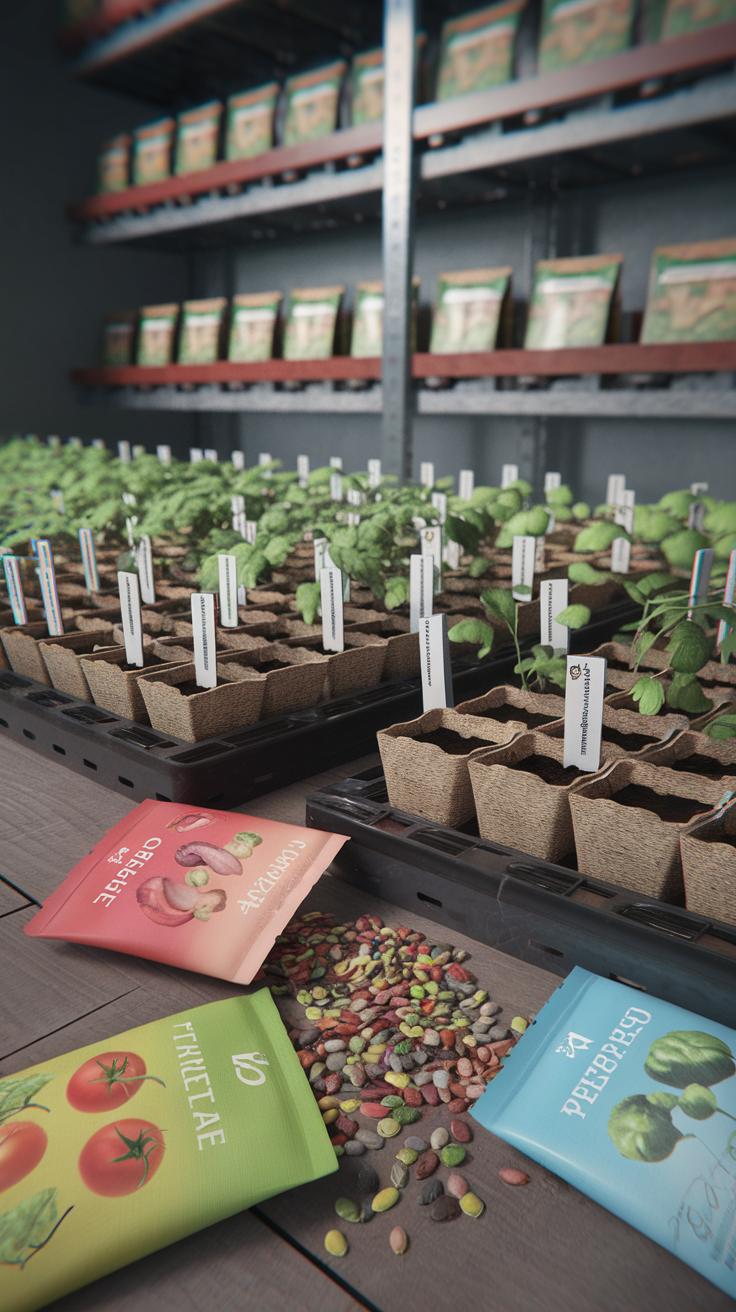
Your choice of vegetable varieties shapes how much you can harvest in a small garden. Varieties that grow compactly save space and let you plant more in limited areas. Look for plants with short maturity times so you can harvest and replant multiple times during the season. Disease resistance reduces the risk of losing crops, saving you time and effort.
Choose vegetables bred for container or small garden growth. These often have bushy or compact forms rather than sprawling vines. Pick types labeled “dwarf,” “bush,” or “patio” to find these space-saving traits. You can find varieties with improved disease resistance to common pests in your region, which helps keep your garden productive.
Have you tried cherry tomatoes that fruit heavily on small plants? Or bush beans that don’t need support and fill beds quickly? These choices help you maximize your harvest, even in tight spaces.
Traits of Productive Vegetable Varieties
Vegetables that fit well into small gardens grow quickly. Rapid growth means you enjoy fresh produce sooner and can plant again after harvesting early crops. Plants that support repeated harvesting, like leaf greens and herbs, offer food for weeks without replanting.
Space efficiency matters. Compact plants or bushy growth forms let you pack more seedlings into limited beds. Plants that resist disease and pests stay healthy longer, giving you higher total yields. Resilient plants also recover better from weather stress or minor care lapses.
Do you prefer crops that give you multiple harvests from the same plant? Consider varieties labeled for “cut-and-come-again” leaf harvesting or bush types that don’t crowd neighbors.
Examples of Vegetables for Small Gardens
Cherry tomatoes grow in small containers or raised beds and produce plenty of fruit. Their compact size keeps your space organized. Bush beans avoid tall stakes but fill small plots quickly and provide steady harvests.
Salad greens such as lettuce, spinach, and arugula grow fast with continuous picking. Small root crops like radishes and baby carrots mature in just a few weeks and take little room. Peppers with compact varieties offer fruit all summer and suit pots or narrow beds.
Have you tried herbs like basil or parsley? They grow well in small containers and extend your garden’s productive space. Choosing these vegetables can turn even a tiny garden into a reliable food source.
Optimizing Planting Techniques for Maximum Yield
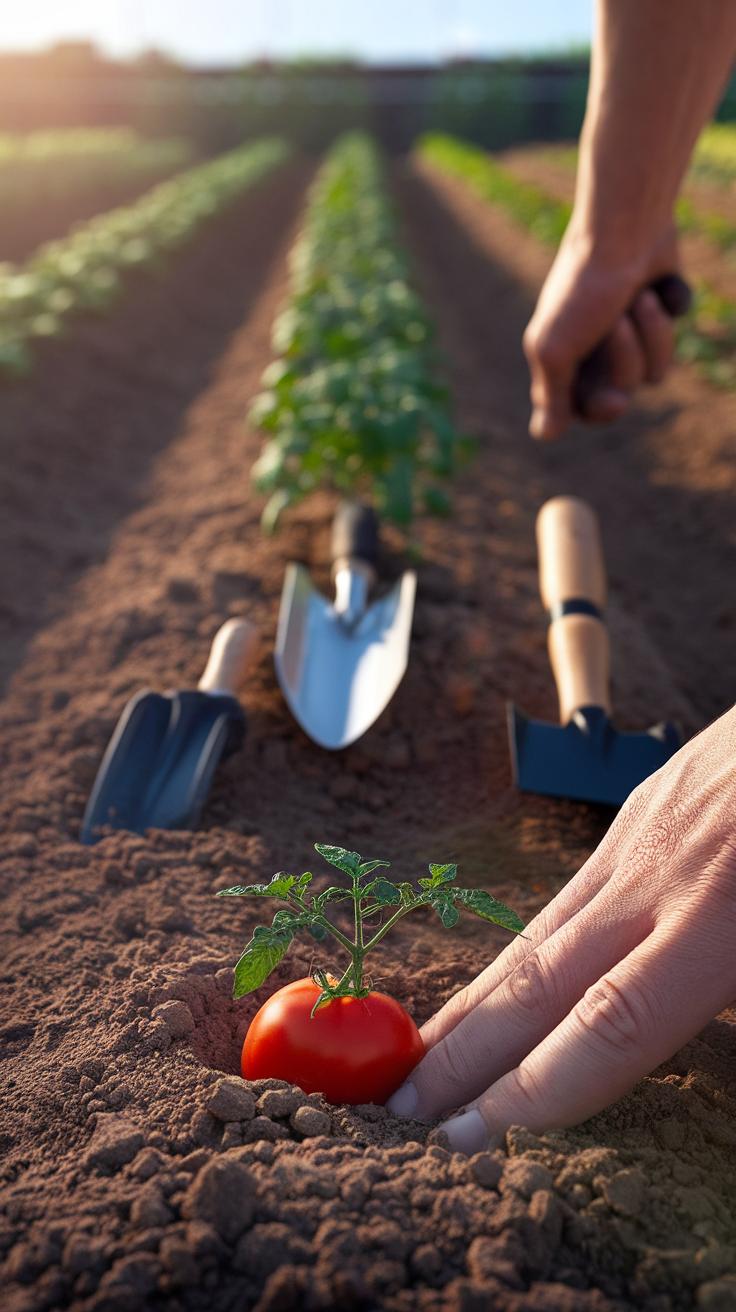
Your small vegetable garden has limited space, so you need to make every inch count. Intensive planting means placing plants closer together than usual, reducing empty soil between them. For example, instead of planting lettuce 12 inches apart, try 6 to 8 inches. This increases the number of plants you grow and shades the soil, conserving moisture. However, avoid crowding plants so much that air circulation is blocked, which can cause disease.
Companion planting pairs plants that grow well side by side. Beans enrich the soil with nitrogen, helping leafy greens like spinach. Marigolds planted near tomatoes repel harmful pests. These partnerships boost growth and reduce the need for chemicals. Experiment by mixing herbs, vegetables, and flowers to find combinations that improve yields and protect crops.
Succession planting fills the gap after harvesting. Once you pick your spring radishes, plant summer beans in the spot immediately. This keeps your garden producing fresh vegetables without wasted space. Plan your garden calendar carefully so there is always something growing. Using vertical supports for climbing plants can free up ground space and increase yield. Tomatoes, peas, and cucumbers all benefit from cages or trellises, making harvest easier and leaves healthier.
Seed spacing and planting depth depend on the seed type but generally follow package instructions. Seeds planted too shallow dry out; too deep they struggle to emerge. Support for taller plants prevents damage and allows more plants to fit around them. When you maximize space vertically and horizontally, your garden stays productive longer, feeding you more food from a small area.
Intensive and Companion Planting
Dense planting helps you grow more vegetables per square foot. You can reduce distance between plants to fit more in, but do not crowd to the point of limiting air flow. Spinach grows well when planted just 4 to 6 inches apart. Plant fast-growers like radishes between slower plants like carrots to use space wisely.
Some plants improve each other’s growth when planted together. Beans fix nitrogen which feeds other vegetables nearby. Onions repel pests that attack carrots. Plant herbs such as basil near tomatoes; it may boost tomato flavor and keep flies away. Companion planting also creates natural barriers that confuse pests and reduce disease spread.
Vertical Gardening and Succession Planting
Growing upward uses space below for other crops. Trellises, cages, and stakes support tall plants like cucumbers, peas, and indeterminate tomatoes. These supports keep fruits off the ground, reducing rot and pest problems. Vertical gardening allows you to plant leafy greens, herbs, or root crops beneath the vines.
Succession planting means planting new crops immediately after harvesting one. If you pull out radishes in early spring, plant beans in the same spot to avoid empty soil. This keeps your garden producing vegetables throughout the growing season. Plan which crops mature early and which grow longer to create a steady harvest that suits your schedule.
Efficient Watering and Fertilizing Practices
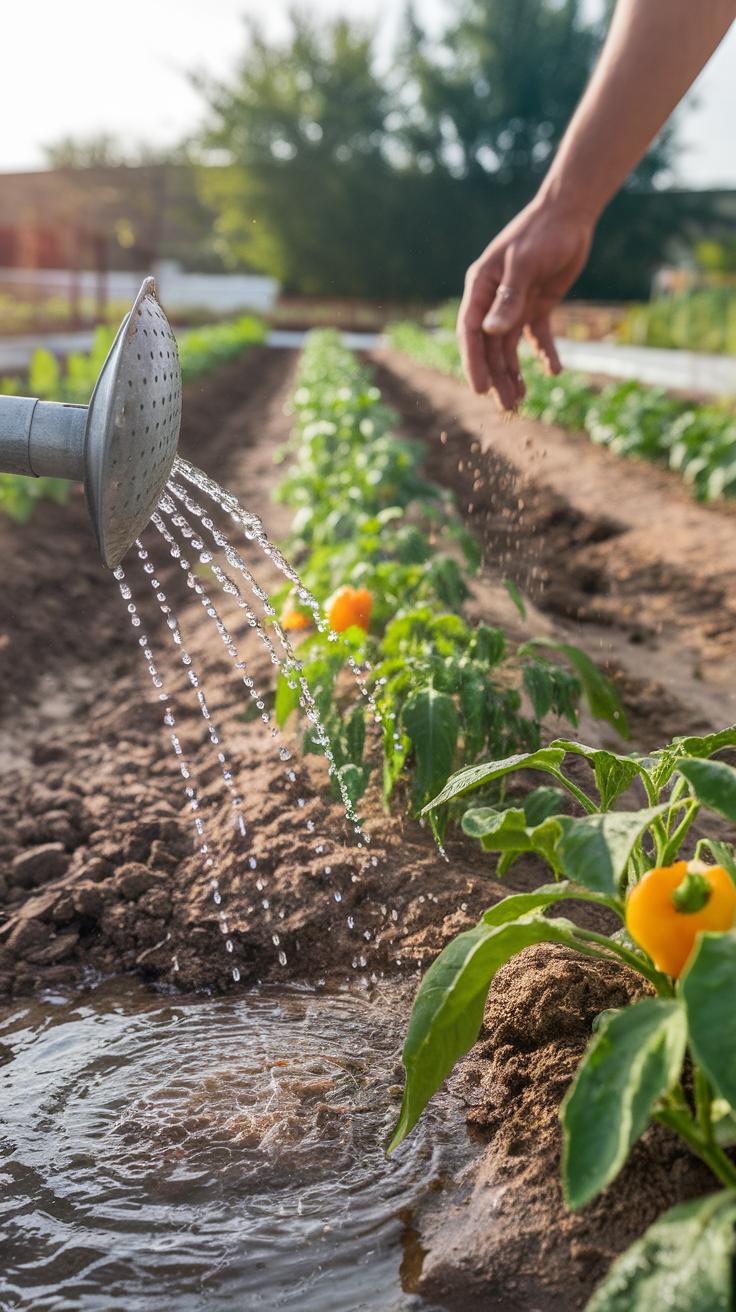
Water and nutrients are the fuel for your vegetable plants. Managing them well helps increase your garden’s production without wasting resources. Overwatering can drown roots and waste water, while underwatering stresses plants and lowers yield. A balanced approach keeps the soil moist but not soaked.
Using a watering method that delivers moisture directly to the plants reduces waste and keeps soil conditions steady. Try to water deeply but less often, encouraging roots to grow strong and reach for moisture. Fertilizing ensures plants get the nutrients they need, but too much fertilizer can harm them or cause nutrient imbalances. Organic or balanced fertilizers, chosen to match your soil and crop type, support healthy growth and better harvests.
Water your garden early in the morning or late in the evening to reduce evaporation and improve absorption. Fertilize according to the plant’s growth cycle—young plants need less than mature, fruiting ones. What watering and fertilizing schedule works best in your space? Experiment and observe how your plants respond to find the perfect balance.
Saving Water While Feeding Plants
Drip irrigation delivers water slowly at plant bases, cutting evaporation and runoff. If drip isn’t an option, use a watering can or hose with a nozzle that allows gentle soaking of soil near roots. Avoid sprinklers that spray leaves and unused areas.
Watering early in the morning reduces water loss through evaporation and fungal risks. Evening watering can also work but increases leaf wetness overnight, which sometimes promotes disease. Adjust timing based on your climate and plant needs.
Mulching around plants retains soil moisture, cutting watering frequency. Does your current watering method use water wisely, or can you switch to drip irrigation or timed watering? Saving water means healthy plants and a sustainable garden.
Choosing and Using Fertilizers
Vegetable gardens benefit from different fertilizers depending on plant types and soil conditions. Organic fertilizers like compost, manure, and fish emulsion release nutrients slowly and improve soil health over time. Balanced synthetic fertilizers offer precise nutrient ratios suited for fast growth.
Apply fertilizer following package instructions. Overfeeding can burn roots or lead to lush leaves with few veggies. Underfeeding stunts growth and reduces yield. Testing your soil every few years can guide your fertilizer choice and application rates.
Feed leafy vegetables more nitrogen, while fruiting plants benefit from higher phosphorus and potassium. Timing matters—feed at planting and during key growth stages for best results. How often do you evaluate your soil’s nutrient needs? Paying attention can boost your small garden’s productivity without waste.
Protecting Your Garden from Pests and Diseases
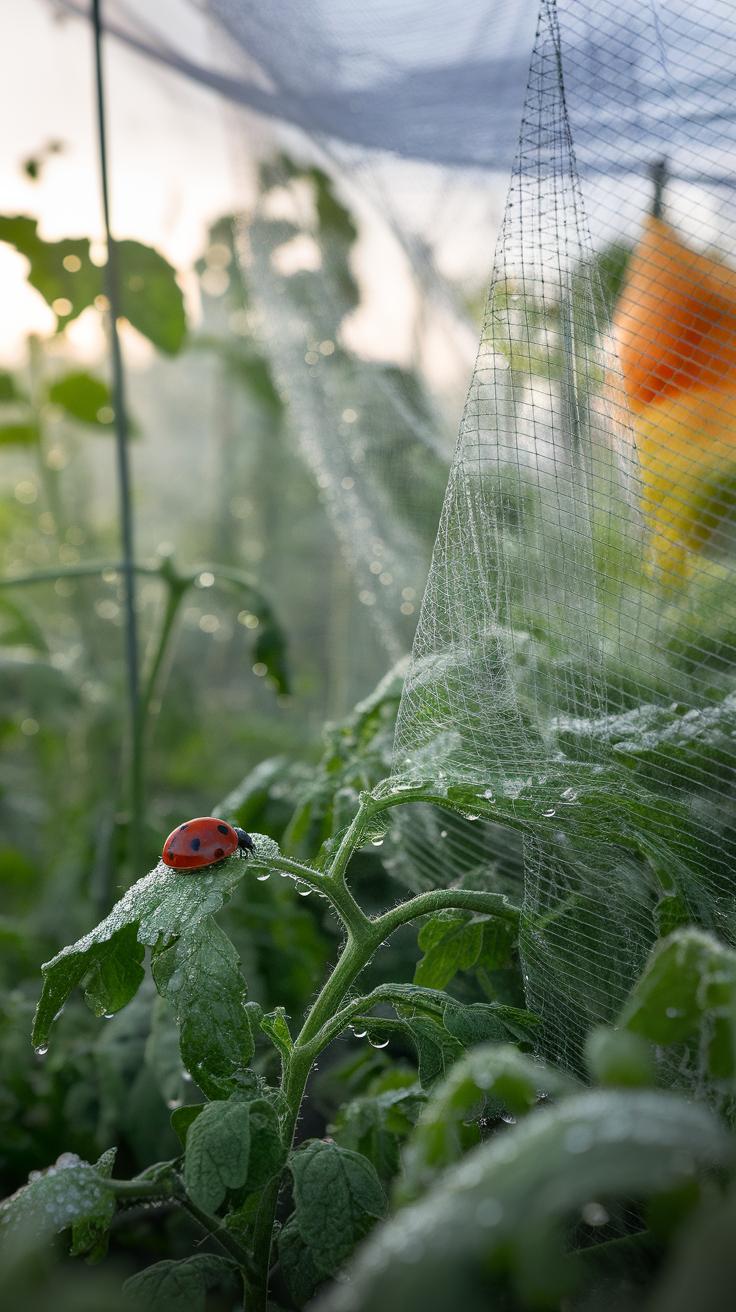
Pests and diseases can cut your garden’s yield quickly if you don’t spot and manage them early. Start by checking plants regularly for signs of damage or spots. Handpick insects like caterpillars or beetles and drop them into soapy water. Use physical barriers such as netting or collars to stop crawling pests from reaching your plants. Companion planting helps too; for example, planting marigolds near tomatoes can repel harmful insects naturally.
Crops weakened by disease or pests produce less food. Rotate your vegetables each season to prevent soil-borne diseases from building up. Avoid watering leaves directly; focus on the soil at the base to keep foliage dry and healthy. Remove and dispose of any diseased leaves immediately to stop spread. What small step will you try first to protect your garden?
Natural Pest Control Strategies
Attract beneficial insects like ladybugs and lacewings by planting flowers such as dill and fennel near your vegetables. These insects feast on aphids and other pests. You can also use row covers to protect seedlings from flying insects without chemicals. Row covers trap heat and moisture which speeds growth, but remove them once plants flower to allow pollination. Combining these methods reduces pests while keeping your garden organic and healthy.
Preventing and Managing Diseases
Rotate crops so plants from the same family don’t grow in the same spot each year. This lowers the chance of diseases that survive in soil attacking new plants. Water your garden early in the morning to let moisture dry off during the day. Wet leaves invite fungal infections and rot. When you spot yellowing or spotted leaves, remove them right away and avoid composting infected parts. Healthy, dry plants stand a better chance against disease.
Harvesting and Storing Your Vegetables
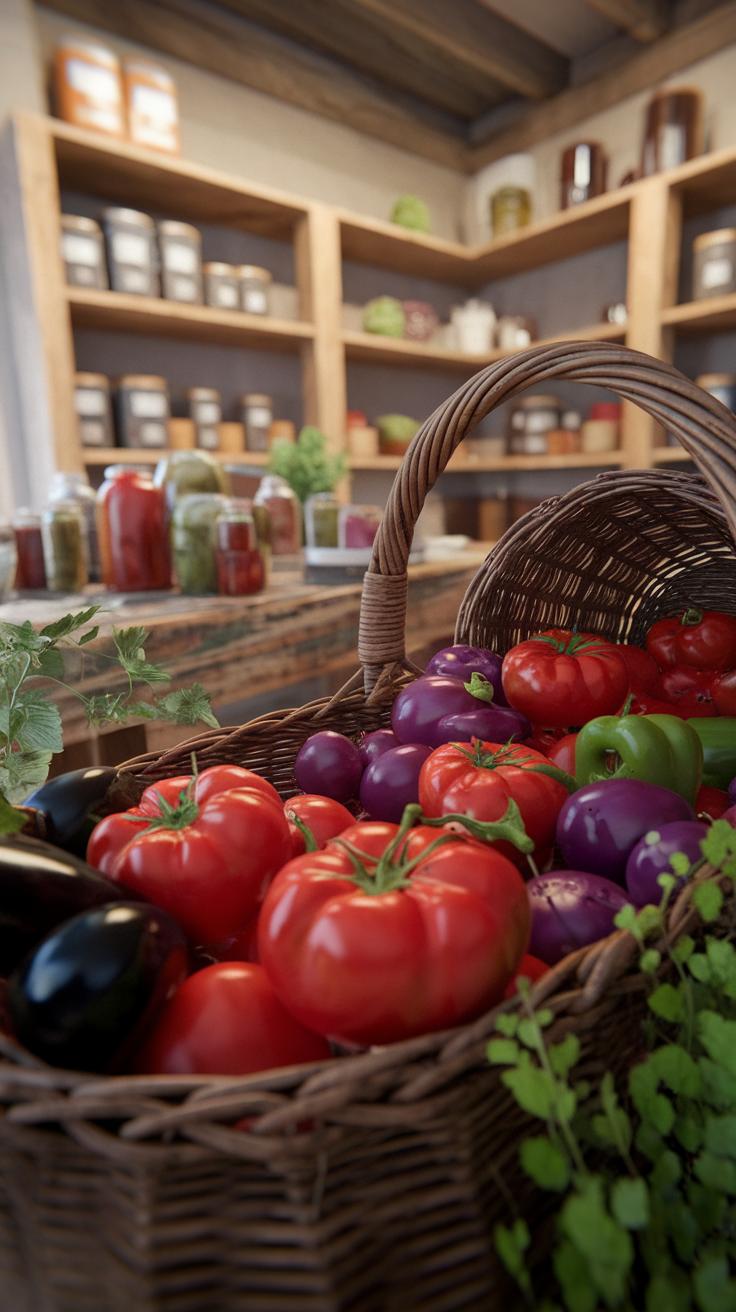
Picking your vegetables at the right time makes a big difference in taste and yield. Each vegetable has signs that tell you when it’s ready. For example, snap beans should be firm and crisp before you pick, while tomatoes turn bright red or their ripe color. Harvesting early or late can reduce flavor or quantity.
Cut or gently twist vegetables from the plant to avoid damage. Broken stems or bruised fruit can slow growth and invite disease. Once you start harvesting, your plants often produce more, so check your garden regularly for ripe picks. Could quick harvesting be the key to doubling your yield?
Proper storage can keep your harvest fresh longer. Some vegetables, like carrots and beets, store well in cool, dark places, while leafy greens often need refrigeration. Avoid washing veggies until you’re ready to use them to prevent spoilage. Will you try storing your vegetables differently next time for better results?
Knowing When and How to Harvest
Watch for size, color, and firmness as signals to harvest. For cucumbers, pick when they are firm and a medium size; oversized ones become bitter. Peppers should have full color but firm skin. Leafy greens are best when leaves reach about four to six inches.
Use scissors or garden shears to cut fruits and vegetables when possible. Pulling by hand can harm stems, affecting future growth. Collect early in the morning or late afternoon to keep plants fresh and avoid heat stress during picking. What method suits your plants best to keep them healthy after harvest?
Proper Storage to Maintain Freshness
Store root crops like carrots, onions, and potatoes in cool, dry, dark places to prevent sprouting and rot. Leafy greens and herbs keep longer if you wrap them in damp paper towels and place them in plastic bags in the refrigerator.
Some fruits and veggies release gases that cause quick spoilage; keep tomatoes and cucumbers separate from apples and bananas. Check your stored vegetables every few days and remove any that show soft spots or mold to protect the rest. How often do you inspect your stored harvest to prevent waste?
Maintaining Your Garden for LongTerm Productivity
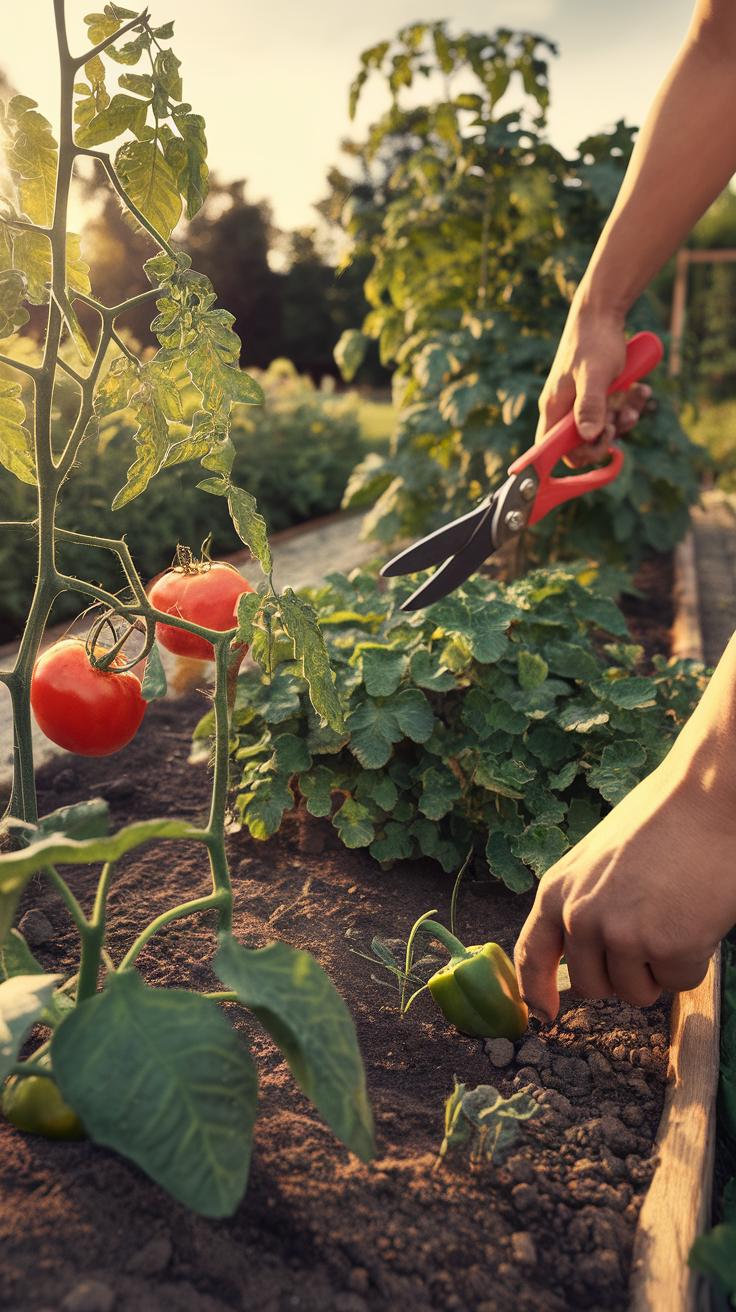
Keep your small vegetable garden productive by committing to regular care. Weeding removes pests’ hiding places and frees nutrients for your plants. Mulching cuts down on water loss and keeps weeds at bay. Pruning helps plants focus energy on producing fruits instead of excess leaves. After harvesting, add compost or organic matter to replenish soil nutrients and improve structure.
Plan crop rotation to avoid soil depletion and control pests. Growing peas or beans one season and leafy greens the next can break pest cycles and restore nitrogen to your soil. Watching your garden daily helps you spot problems like disease or pests early, letting you act quickly before they spread. How often do you check your plants for signs of stress or insects?
Routine Garden Care Tasks
Daily checks make a difference. Pull weeds before they spread seeds and compete for resources. Water early in the morning when roots can absorb moisture fully. Remove dead leaves to prevent disease and allow air to circulate around plants. Weekly, thin crowded seedlings so each plant gets enough space and light. Small actions you do routinely build a healthier garden over time.
Planning for Future Growing Seasons
Rotate crops by family to keep soil balanced and reduce pests. For example, switch from nightshades like tomatoes to root crops such as carrots. Each crop draws and returns different nutrients. Work in organic matter like compost or aged manure before planting to boost fertility naturally. Ask yourself: How can you adjust your rotation to get the most from your soil year after year?
Conclusions
Small vegetable gardens give you a chance to grow your own food and enjoy the benefits of fresh vegetables. By planning well, picking the right crops, and using smart techniques, you can make your small space productive. Regular care and attention also help keep your plants healthy and increase your harvest. When you maximize your yield, you get more food that lasts longer and tastes better.
Your small garden can become a reliable source of fresh produce. It needs your effort and focus but the rewards are worthwhile. The tips and advice presented in this article can help you start or improve your garden. Think about what you want to grow, use space carefully, and keep your plants healthy. These steps will bring success and satisfaction to your small vegetable gardening experience.


